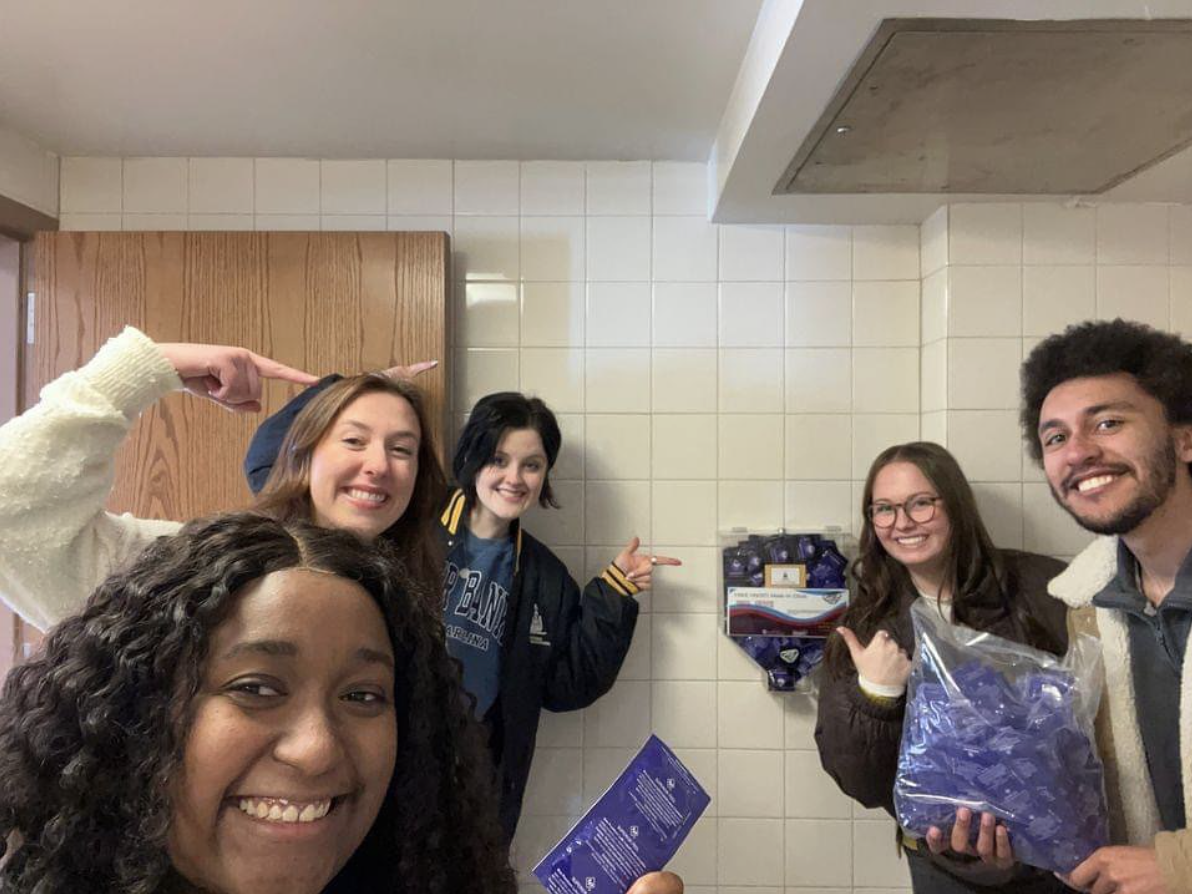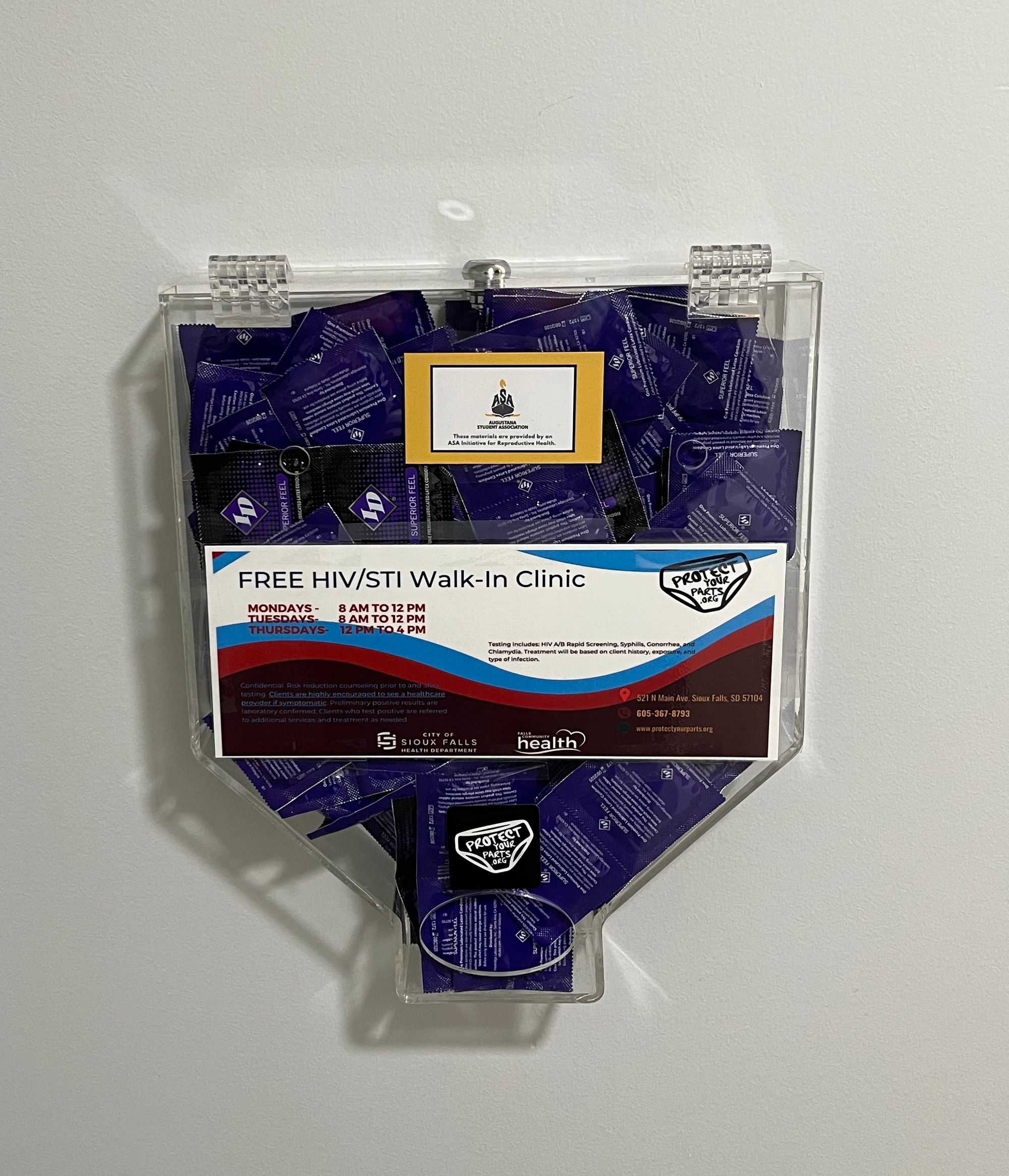Condom dispensers come to residence hall bathrooms

As a part of its reproductive health initiative, the Augustana Student Association placed condom dispensers in residence hall bathrooms of Bergsaker, Granskou, Stavig and Wagoner.
ASA’s co-curriculum committee, chaired by junior senator Lauren Teller, was responsible for overseeing the project and will be restocking the dispensers every week.
“Being on a college campus, students are going to have sex, obviously, and if there’s a free resource out there where you can get 6,000 condoms and we can just put them into dispensers, then why not make that available?” Teller said.

The committee reached out to Beth Elam, the associate dean of students, for help facilitating the project.
“I worked with a contact that I had down at the Sioux Falls Department of Health, where we could get [condoms] for free through their outreach program,” Elam said. “They also provided us with the dispensers.”
From there, Elam and the committee outlined where to place the dispensers on campus. They chose the four specific residence halls for their large student populations. The committee plans to expand the program to other dorm buildings next year.
“We have six,” Teller said. “Four of them are up and installed right now… and next year, East and Solberg will have new dispensers.”
According to Teller, the group intentionally selected first-floor, single-occupant bathrooms to house the dispensers.
“That was kind of the whole point of putting them in there,” Teller said. “You shouldn’t just have them in restrooms that are designated for men.”
Dispensers will not be placed in academic buildings, but the committee has discussed placing them in the Commons so students living off-campus and in the apartments can access the resource as well.
Throughout the installation process, the committee was most concerned with people vandalizing dispensers and about being able to provide educational materials along with the condoms.
According to Elam, condoms used to be placed in baskets on the front desks of residence halls, but the baskets were often knocked off and condoms were strewn on the floor. Therefore, the committee wanted dispensers for security purposes.
“We did want something more that was on the wall, that you could go and grab it,” Elam said.
Additionally, the committee was concerned the condoms would be tampered with.
Teller said there were instances of improper use shortly after the dispensers were placed, including condoms being used as water balloons or having holes poked in them, but she said the activity has since ceased.
“I think once people were used to the dispensers being in the single-occupant restrooms, it became normalized,” Teller said.
According to Elam, South Dakota has seen a rise in HIV and STD diagnoses in recent years, so it was important for her to have educational material provided with the condoms.
“[This] is a topic that, as we talk about student wellbeing … it’s an important topic to educate on,” Elam said. “It’s just an uncomfortable one for students, so we just want to make it so that we get students the information in a way that is helpful.”
Teller said informational notes about ASA and the Falls Health Community Clinic are provided next to the dispensers to educate students.



